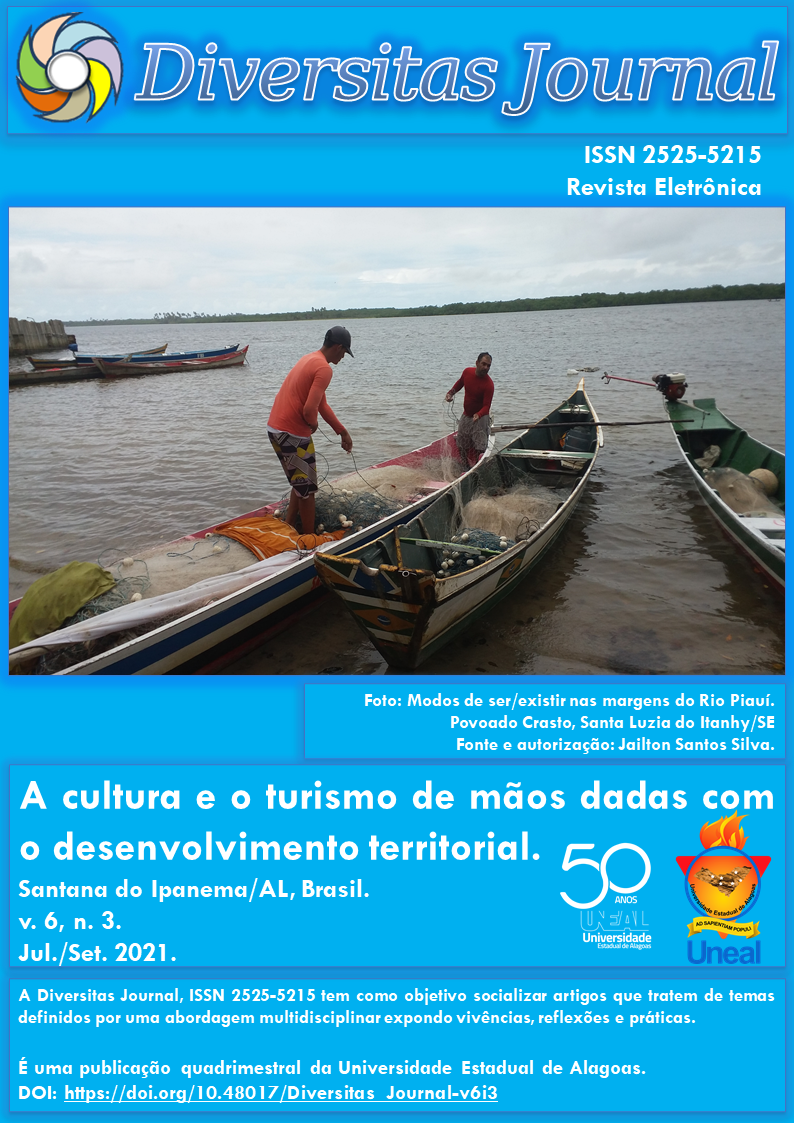Análise epidemiológica e espacial da esquistossomose e geohelmintoses no estado do Piauí
DOI:
https://doi.org/10.48017/Diversitas_Journal-v6i3-1871Abstract
ABSTRACT: Enteroparasitosis represents a serious public health problem, especially in underdeveloped countries, affecting populations that are in conditions of social vulnerability. The research analyzes the epidemiological and spatial scenario of schistosomiasis and geohelminthosis, in the state of Piauí. The study is epidemiological, descriptive, retrospective, quantitative and analytical approach, with collection of secondary data in the DATASUS Information System (SISPCE, SINAN, SIH, SIM) for the years 2011 to 2017 and the use of GIS for spatial analysis. Between 2008 to 2010 the prevalence of infection for schistosomiasis was 0.04% and geohelmintheses 0.7% found only in the municipality of Picos. However, between 2011 and 2017, human schistosomiasis was found in 6 others, with higher occurrence in Picos (53.8%). Of the total number of parasitized by S. mansoni, 61.5% are male, aged between 20 and 29 years, 76.9% are brown, originating from the urban and rural areas in equal proportion and more than half of all cases 53.8% are reported. Deaths from schistosomiasis were predominant in males (100%) between 2008- 2016. Infection by geohelminthesis affected 3.7% of individuals, with a higher prevalence of helminths A. lumbricoide 54.1%, followed by T. trichuria 23, 7% and hookworms 22.1%. The presence of these enteroparasitoses requires the adoption of effective public policies for sanitation of the environment, housing, education and health, in addition to the adoption of strategies that facilitate the knowledge on the forms of contagion and prevention.
KEYWORDS: Enteroparasitosis, Epidemiology, Prevalence.
Metrics
Downloads
Published
How to Cite
Issue
Section
License
Copyright (c) 2021 Alane da Silva Sousa, Andressa Almeida Barros, José Jenivaldo Melo Irmão, Andrea Gomes Santana de Melo

This work is licensed under a Creative Commons Attribution 4.0 International License.
The Diversitas Journal expresses that the articles are the sole responsibility of the Authors, who are familiar with Brazilian and international legislation.
Articles are peer-reviewed and care should be taken to warn of the possible incidence of plagiarism. However, plagiarism is an indisputable action by the authors.
The violation of copyright is a crime, provided for in article 184 of the Brazilian Penal Code: “Art. 184 Violating copyright and related rights: Penalty - detention, from 3 (three) months to 1 (one) year, or fine. § 1 If the violation consists of total or partial reproduction, for the purpose of direct or indirect profit, by any means or process, of intellectual work, interpretation, performance or phonogram, without the express authorization of the author, the performer, the producer , as the case may be, or whoever represents them: Penalty - imprisonment, from 2 (two) to 4 (four) years, and a fine. ”


















